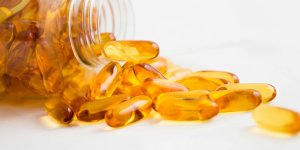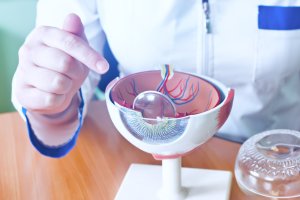Wet vs. Dry Macular Degeneration

Voted Best of Berks—
eight years in a row!
Macular degeneration is a common eye condition affecting millions worldwide, primarily those over 50. It causes progressive damage to the macula, the retina’s central portion responsible for sharp, central vision. There are two main types of macular degeneration, and it is essential to know the differences between wet vs. dry macular degeneration. Understanding their differences is crucial for diagnosis, treatment, and management.
Dry macular degeneration, or non-neovascular or atrophic macular degeneration, is the more common form, accounting for about 90% of cases. It occurs when the light-sensitive cells in the macula gradually break down, leading to a gradual loss of central vision. The exact cause of dry macular degeneration is not fully understood, but factors such as aging, genetics, smoking, and dietary habits may play a role. Symptoms typically develop slowly and may include blurred vision, difficulty reading or recognizing faces, and the appearance of drusen—tiny yellow deposits under the retina.
In contrast, wet macular degeneration, also known as neovascular or exudative macular degeneration, is less common but more severe. It occurs when abnormal blood vessels grow beneath the retina and leak fluid or blood, causing rapid and significant damage to the macula. These abnormal blood vessels form in response to inflammation, oxidative stress, and vascular endothelial growth factor (VEGF). Wet macular degeneration can lead to sudden and severe vision loss if left untreated. Symptoms may include distorted or wavy vision, blind spots, and rapid loss of central vision.
Diagnosis of macular degeneration typically involves a comprehensive eye examination, including visual acuity tests, dilated eye exams, optical coherence tomography (OCT), and fluorescein angiography. These tests help ophthalmologists determine the type and severity of macular degeneration and plan appropriate treatment strategies.
Treatment options for dry macular degeneration are limited, as there is currently no cure for the condition. However, lifestyle modifications like quitting smoking, eating a healthy diet rich in antioxidants and omega-3 fatty acids, maintaining a healthy weight, and protecting the eyes from UV light may help slow its progression. In some cases, dietary supplements containing vitamins and minerals, such as vitamins C, E, zinc, copper, and lutein/zeaxanthin, may be recommended to reduce the risk of advanced dry macular degeneration.
On the other hand, treatment for wet macular degeneration aims to halt the growth of abnormal blood vessels and prevent further damage to the macula. This typically involves anti-VEGF injections, which help reduce inflammation and leakage from the abnormal blood vessels, thus preserving vision and preventing severe vision loss. In some instances, photodynamic therapy (PDT) and laser therapy may also target and destroy abnormal blood vessels.
In conclusion, while both wet and dry macular degeneration affect the macula and cause significant vision loss, their underlying mechanisms, progression, and treatment options differ. Dry macular degeneration progresses slowly and currently has no cure, while wet macular degeneration is more aggressive but can be effectively managed with timely intervention. Early detection, regular eye examinations, and adherence to treatment recommendations are crucial for preserving vision and maintaining quality of life for individuals with macular degeneration.
If you know or suspect you have macular degeneration or just need an eye doctor for all your eye health needs, Eye Consultants of Pennsylvania has several convenient locations. We can help with knowledge on wet vs. dry macular degeneration and much more, so call today.
Find a Doctor
Physician information including education, training, practice location and more.
Schedule an Appointment
Call 800-762-7132 or make an appointment online.





